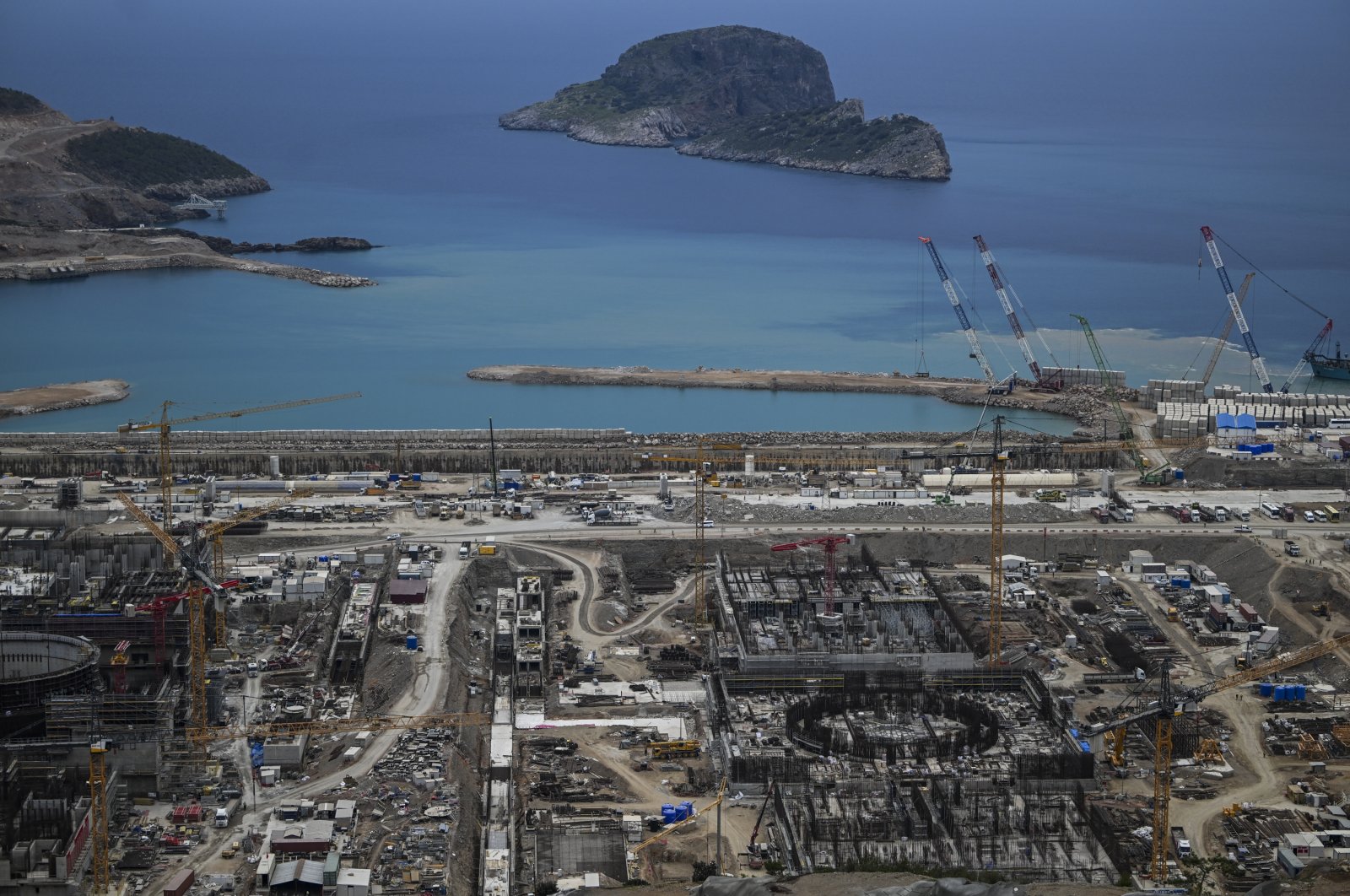The ceremony, which granted Akkuyu a “nuclear” plant status, the first for Türkiye, was attended by President Recep Tayyip Erdoğan and his Russian counterpart Vladimir Putin via videoconference.
With the delivery of nuclear fuels via air and sea, the Akkuyu power plant has become a nuclear facility, Erdoğan said at the ceremony.
“Türkiye has risen to the league of countries with nuclear power in the world, albeit after a 60-year delay,” the president said.
Erdoğan said the EU eliminates roadblocks by accepting nuclear energy as green energy, adding: “We made our country part of this development with Akkuyu.”
Akkuyu NPP is Türkiye’s “biggest joint investment” with Russia, Erdoğan said.
The plant will be fully operational by 2028 and supply 10% of Türkiye’s electricity consumption, the president also said, noting that the Akkuyu project will contribute $1.5 billion (TL 29.15 billion) annually to decrease Türkiye’s natural gas imports and will have a “positive impact” national income.
Putin, meanwhile, said during the joint news conference that it would be difficult to talk about “success” if there were no leaders like President Recep Tayyip Erdoğan.
Russia will continue to help meet Türkiye’s energy needs, Putin also added.
The Akkuyu NPP is being built by Russia’s state atomic energy company Rosatom in Mersin province on the southern Mediterranean coastline.
It is scheduled to see the first of its four reactors go online in the first half of this year. Akkuyu will eventually boast a capacity to provide about 10% of Türkiye’s electricity needs.
10% of electricity needs
Türkiye and Russia signed an intergovernmental agreement in 2010 to build the plant. Akkuyu will comprise four Russian-designed VVER generation 3+ reactors, with 1,200 megawatts (MW) capacity each.
The foundation of the first reactor was laid in April 2018, while the construction of the second, third and fourth units started in June 2020, March 2021 and June 2022, respectively.
The three remaining units are due to start operation by the end of 2026, at a rate of one per year, to ultimately have a total installed capacity of 4,800 megawatts (MW).
Once completed, the plant is expected to produce 35 billion kilowatt-hours (kWh) of electricity annually and will meet about 10% of domestic electricity needs.
According to Rosatom, the site in Akkuyu is located in the fifth-degree earthquake zone, considered the safest region for earthquakes.
The plant design includes an external reinforced concrete wall and an internal protective shell made of “pre-stressed concrete,” with metal cables stretched inside the concrete shell to give additional solidity to the structure, the company says.
And the modern reactor design includes an additional safety feature – a 144-ton steel cone called the “core catcher” that traps and cools any molten radioactive materials in an emergency, according to Rosatom.
The company emphasized that power units with VVER-1200 reactors comply with the post-Fukushima requirements of the International Atomic Energy Agency (IAEA).
According to government figures, if the power plant started operating today, it could single-handedly provide enough electricity for a city of about 15 million people, such as Istanbul.
The plant, which will have an estimated service life of 60 years with an extension of another 20 years, will produce carbon-free energy around the clock.
Akkuyu is the world’s first NPP project implemented through a build-own-operate model. Under the long-term contract, Rosatom has agreed to provide the power plant’s design, construction, maintenance, operation and decommissioning.
The firm holds a 99.2% stake in the project estimated to cost around $20 billion (TL 388.53 billion), marking it the biggest investment in Türkiye’s history implemented in a single site.
Nuclear journey
Türkiye’s intention to build a nuclear power plant on its land dates back to the 1950s and 1960s.
In 1955, it became one of the first countries to sign the “Agreement for Cooperation on the Civil Uses of Atomic Energy.”
The agreement was followed by the establishment of the Turkish Atomic Energy Authority, which was set up for the scientific and technical development of the state and to train personnel.
The first research on the creation of a nuclear power plant began in 1965. In 1974, the Akkuyu site in the Gülnar district of Mersin was considered suitable for the construction of the first plant.
Nuclear regulators provided the license for the plant’s construction in Akkuyu in 1976 following eight years of seismic studies to determine the most suitable location. Still, the project was slowed down after the Chernobyl nuclear accident in 1986.
After a long break due to financial and political reasons, Türkiye decided to turn to Russia’s many years of experience in nuclear technology.
Large nuclear power plants have traditionally taken a while to build because of the size, scale and complexity of the infrastructure and delays associated with first-of-a-kind plants.
Source:dailysabah.com
